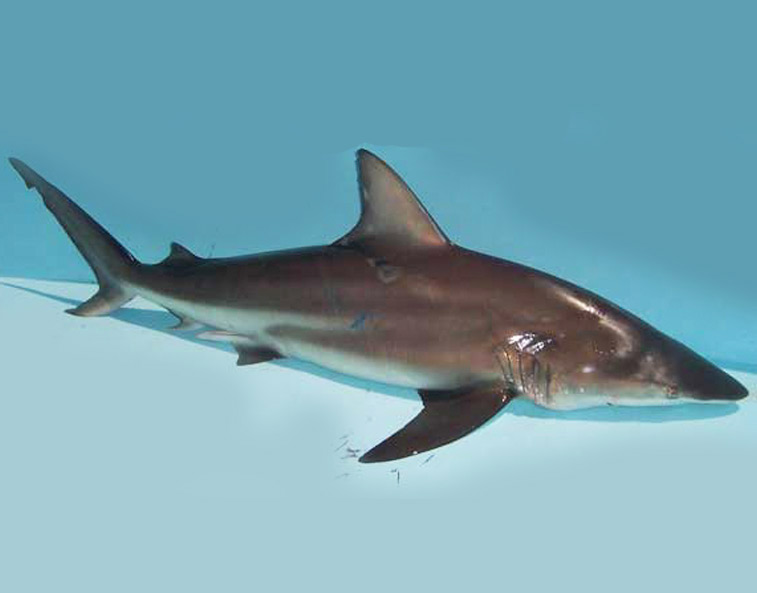Blacktip Shark

Blacktip (Carcharhinus limbatus)
Spinner (Carcharhinus brevipinna)
For no other reasons than to save a little ink and not be redundant I'm lumping blacktips and spinners together. I can do this because they are very similar in appearance, range, and habits, but anglers must keep in mind that these are indeed two separate species, and it would serve any shark fisherman well to know how to tell one from the other. But first the similarities:
While they are sometimes encountered far offshore, most anglers hook blacktip and spinner sharks in the shallower nearshore waters close to the coast, sometimes right from the surf or at the mouth of inlets. I'll often refer to these species as "warm water" sharks because off the Mid-Atlantic we don't start seeing them until mid-summer when our local water temperatures push up into the mid-70's, and then they depart once things start to cool in the early fall. These species are somewhat uncommon catches in the Northeast (particularly the spinners), but from the Carolinas south and all along the Gulf Coast, they're quite common throughout most of the year.
Blacktips and spinners dine primarily on small schooling fish. They have a feeding technique that has them spinning and snapping as they charge through schools of their prey. When feeding on schools that occur close to the surface it's not uncommon to see these sharks launch out of the water (still spinning) at the end of an attack. Once hooked, they'll often use the same spinning motion both below the surface and in the air when they jump.
While there are a lot of similarities there are also a few subtle differences that will help anglers distinguish these two species. Spinners will grow a bit larger and reach a total length of about nine feet, while blacktips will only make it to six or seven. A profile view of the two sharks will show that a spinner's head from the tip of the nose to the back of its mouth is much sleeker than that of the blacktip; it almost looks as thought the shark's head was put in a press and squashed down to make it more streamlined. A blacktip may also appear to be a bit huskier in the shoulder area just in front of the first dorsal fin.
The video below shows how to identify blacktip sharks and distinguish them from spinners.
The first dorsal fin on a spinner is also a little farther back on the body than on a blacktip. But the most obvious distinguishing characteristic involves the black tips on the fins. Both species have black tips on their fins including the bottom lobe of the tail, but the blacktip lacks this marking on the anal fin, which is the last fin on the underside of the shark before its tail. So the spinner has a black tip on its anal fin, and blacktip does not. Furthermore, the black makings on all the other fins on the spinner are much more noticeable than those of the blacktip - and when blacktips reach maturity, their black tips tend to fade altogether.




 Email Article
Email Article 




